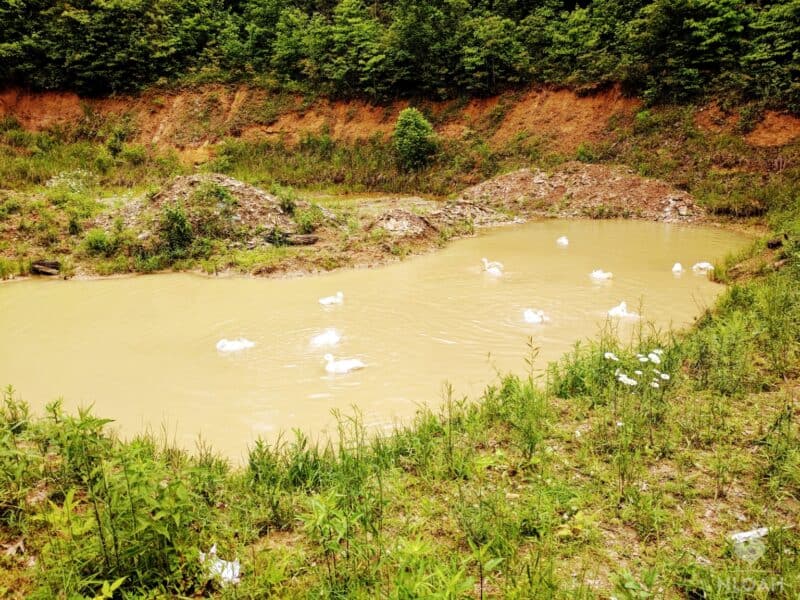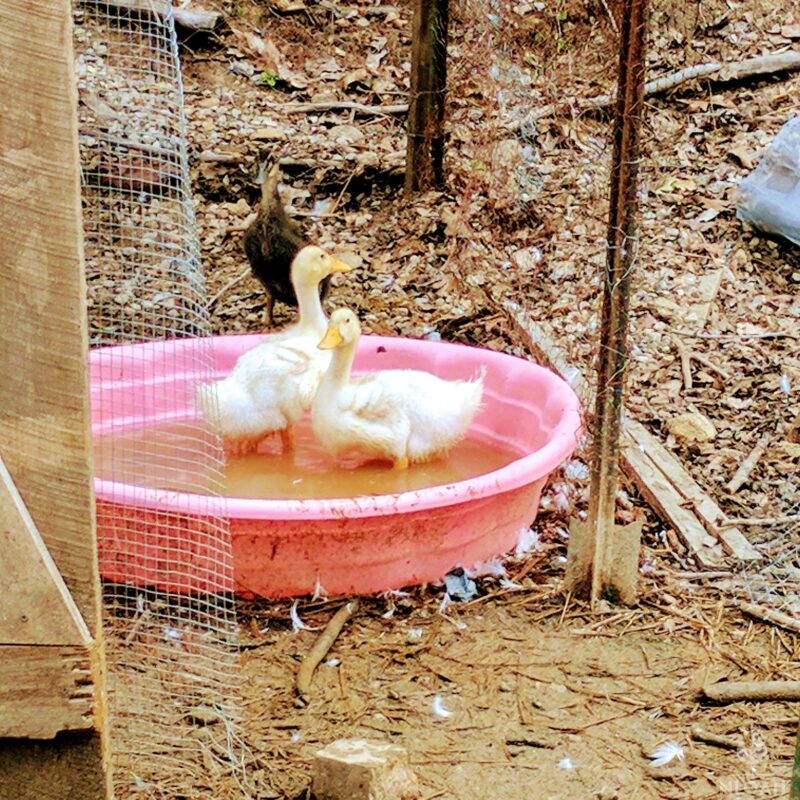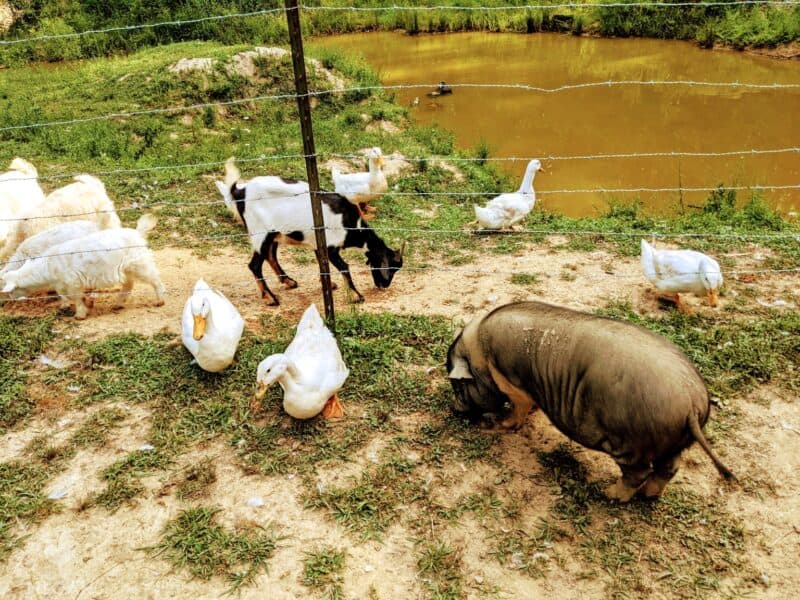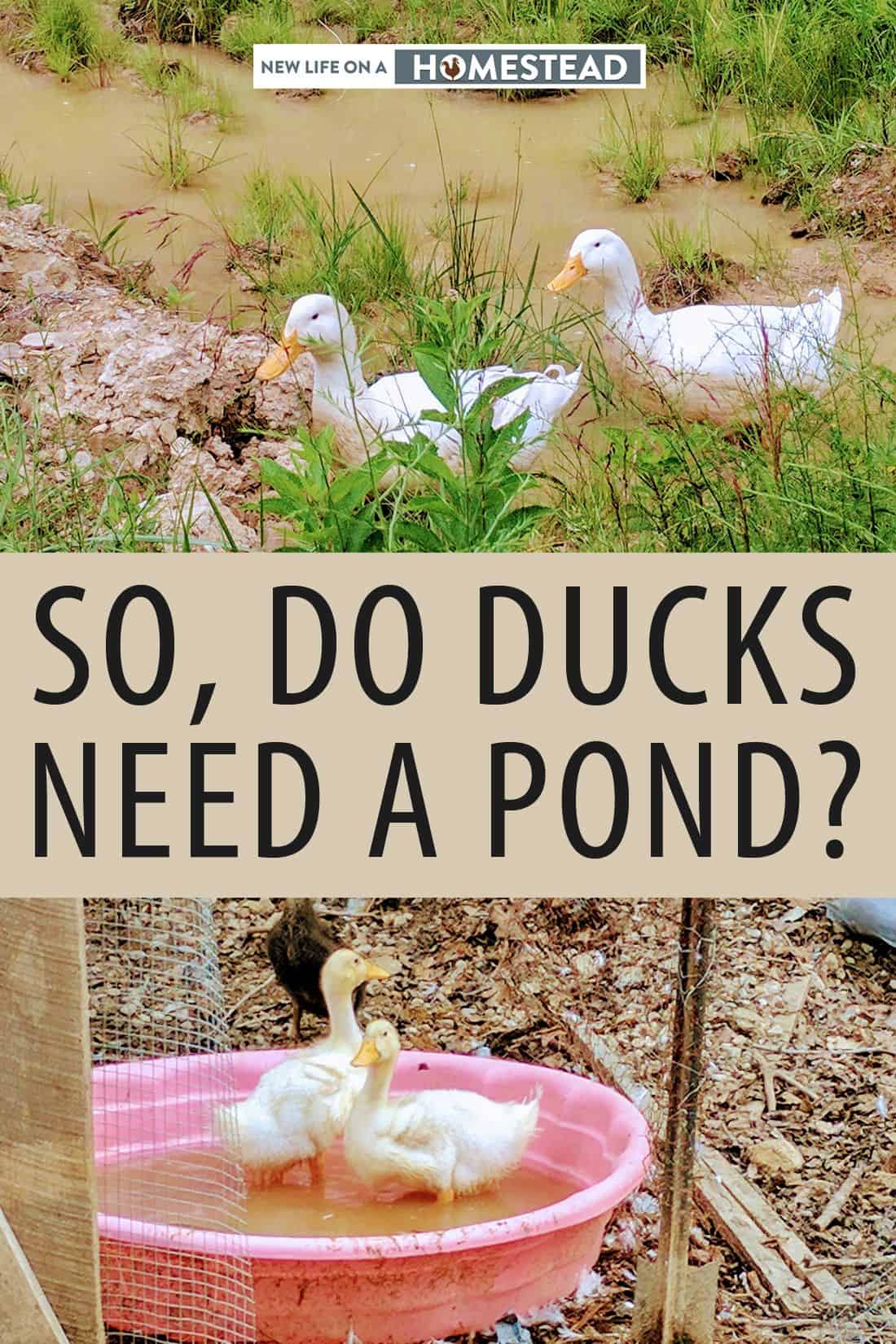Ducks need water – ducks love water … it is just that simple. Whether or not they need a pond is the one question most asked by potential newbie duck keepers. These cute egg birds are a great addition to virtually any homestead.

This begs the question: do ducks really need a pond?
No, ducks don’t really need an actual pond, but they do need a place to bathe, such as a kiddie pool – to clean their bills and feathers. A pond with a filtration system is ideal, though.
Unlike chickens, ducks need access to water at all times. While they can go about eight hours without water, such a practice is not good for their overall health.
Ducks dry quickly, and are far less susceptible to frostbite than chickens during the winter – when they will need access to unfrozen water, as well.
When keeping ducks they must always have a water source but no, it does not necessarily need to be a pond. Ducks have long been kept by rural homesteaders. We can dig a big pond if one is already a part of the natural landscape – problem solved.
Folks who cannot undertake such a project due to a lack of equipment, funds, or space can still keep ducks without the need to move or take out a loan.
A shovel-dug decorative garden-style pond in the coop run or the free range area, or even something as easy to place as a plastic baby pool, rubber or metal livestock tub, will work beautifully.
Just don’t use an inflatable pool. Ducks have small toenails on their webbed feet that can easily poke holes through the sides. They can also bite at the material and stand on the sides, weighing them down as water pours out the sides.

How Big Does A Duck Pond Or Water Feature Need To Be?
How large of a duck pond or baby pool you need will depend on how many ducks are being kept in the space or will use it when free ranging. The larger the pond or pool, the more fun the ducks will have – and they sure can be quite entertaining out on the water.
But, the general rule of thumb is each bird needs six to nine square feet of water area to be able to move about freely, clean themselves, and to closely simulate a natural environment.

Do Ducklings Need A Pond, Too?
While all ducks need a pond or water source, ducklings should not have access to it until they are a bare minimum of two weeks old. The oils that allow the duck down or feathers to dry quickly do not come until they are at least 14 days old.
The quick-drying ability prevents the ducks from remaining wet very long and quite literally catching a deadly chill.
It’s probably best to keep ducklings from a water source they can immerse themselves in until they are about one month old – even if you are keeping them in a heated brooder instead of outdoors.
How Steep Should The Pond Or Water Source Be?
If you have a pond, the ducks simply need a sloping bank to climb out of easily. Most breeds of domesticated meat and egg ducks either cannot fly or cannot fly well.
Expecting them to be able to safely waddle in and out of a steep area can deter the ducks from getting into and out of the pond – or cause injuries.
When using a plastic baby pool or a livestock tank as a water source, do not use anything with walls steeper than 7 or 8 inches deep for mature ducks.
This entrance and exit depth will allow the ducks to both get in and out of the water safely and easily. A water source for ducklings should not have walls that are more than 5 inches tall.
Some ducks enjoy going down a slide to get into a water source. This can be quite entertaining to watch.
When building a slide set up to go with a pond or in the run water source, make sure the ducks can safely get up to the slide area on a ramp that is not too steep and has some type of side wall protection to prevent one of the birds from getting knocked off by another – this can be especially important when the little balls of energy that are ducklings, are involved.
The video below shows ducklings enjoying a slide in their small livestock tank. It is a wonderful setup that seems to have worked well for the keepers.
However, the slat board ramp without any side wall protection is something that I would change, to offer an increased level of protection against leg injuries in case one duckling knocks another onto the hard ground.
I highly recommend spending some time watching the ducklings or even mature ducks get into and then out of their pond or water source for a bit after setting it up to ensure they are able to both get into it and out of it easily and safely. This will not only be time well spent, it will be adorably entertaining as well.
How Deep Does A Pond (Or Water Source) Need To Be?
Ideally, the duck can fully immerse its body under the water and have room to swim around obscured from the surface. Our duck pond ranges from one half of a foot after the gently sloping bank to three feet deep in the middle.
These depths and design make the water feature safe for both young and mature ducks and allow even the largest ducks (my Jumbo Pekins) to go entirely under the water for short swims.
Even though ducks are champion swimmers, they can still drown in water. Although this is rare, especially in a man-made pond or water feature designed especially for them, it is crucial to keep this idea in the back of your head when designing a large pond or swimming area.
If the duck water feature is large, consider floating a platform of some type in the middle so the ducks can easily get out and take a rest and dry off without the need to swim a long distance back to a shallow bank.
Never use anything to make a duck pool or pond that will remain slippery on the boundary walls. Using an old bathtub, for example, would not likely allow the ducks the traction needed to climb out of the water feature for young, aging, or injured ducks.
Do Ducks Need to Swim?
While ducks do not necessarily need a large area to swim in, they do still need enough water in which they can dunk their heads and clean their bodies.
Although a pond would be ideal, there’s nothing wrong with simply having a few large buckets or paddling pools for your ducks to use. Ducks that are able to swim do also tend to be much healthier and happier.
Keeping The Water Clean
The health of the duck flock may be largely determined by the water quality the flock not only drinks, but swims in. Duck droppings are both larger and far more liquid than chicken droppings.
The members of the flock WILL leave droppings in the pond that can cause microbes and bacteria to grow that are harmful to them – especially to their feet because they remain submerged the entire time they are swimming, mating, or floating in the water.
Using a filtration system for a garden pond can help keep a coop run water source clean. But, when you are dealing with a natural or man-made pond, such a filtration system may not be affordable or feasible.
Adding a solar-powered fountain to the pond will help keep it circulating, and deter the build-up of bacteria. Adding a plethora of water plants that are both edible for the ducks and serve as natural filters is a far easier and more affordable option for most folks.
You can grow the pond plants in tubs or buckets to maintain a steady supply throughout the year, avoiding the need to frequently reorder plants to keep the pond water quality within healthy ranges.
Watch the video below for an excellent example of a small self-cleaning garden pond set up which can be created inside the coop run or in a small urban or suburban backyard.
The water in duck ponds can be used to help irrigate the garden or even the backyard. Creating a drainage system to help remove soiled water that is filtered in garden-growing plots may infuse a significant amount of nitrogen into the soil.
Using a setup like this to clean out a medium to even a large garden pond allows you to quickly make a massive amount of compost manure “tea” to help your vegetable plants, fruit trees, and herbs thrive.
Using barley straw to help keep a duck pond clean can also work pretty well. While the straw will not necessarily completely clean out the algae that can grow in a duck pond, it can naturally inhibit its growth.
Place about 25 grams of loose barley straw in netting or tie them together and float as bundles (they will sink to just under the surface) to help clean up existing algae and prevent more from growing.
Adding some tadpoles and snails to the pond environment will not only help keep the water clean but provide a protein-rich and natural source of food for the duck flock at the same time.
Final Words
Keeping ducks for meat, eggs, or simply as farm pets is a vastly rewarding experience. Once you take on the responsibility of caring for these poultry birds, supplying them with a duck pond or a duck pool is mandatory.
Other than the need to make sure water quality stays safe and clean, providing a water source for ducks is no more difficult than keeping any other type of traditional homesteading livestock.


Tara lives on a 56 acres farm in the Appalachian Mountains, where she faces homesteading and farming challenges every single day, raising chickens, goats, horses, and tons of vegetables. She’s an expert in all sorts of homesteading skills such as hide tanning, doll making, tree tapping, and many more.
